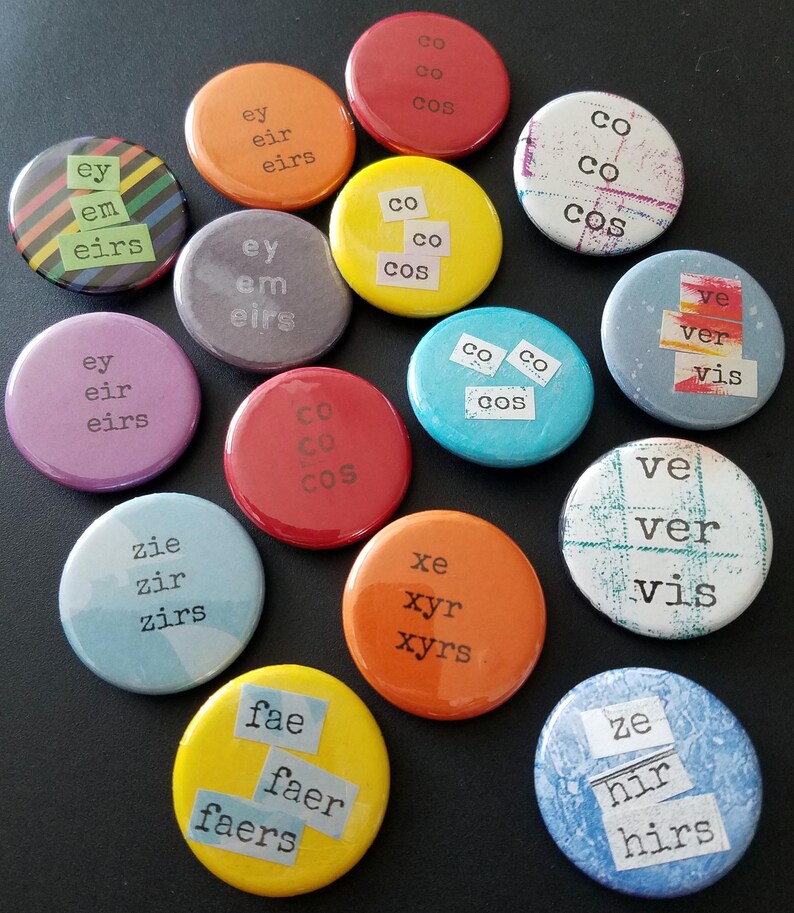

He was going to walk his dog today, all by himself.īud was going to walk bud’s dog today, all by budself. For example, using he/him/himself pronouns juxtaposed to bud/buds/budself pronouns: Neopronouns are used in place of the typical pronouns of your gender assigned at birth: AMAB (assigned male at birth), AFAB (assigned female at birth), and intersex (upon which gender is determined on a case-by-case basis). It’s pretty simple to incorporate these new pronouns into regular discourse. In standard practice, these pronouns are used by nonbinary people to describe how they feel about their gender identity, or what they feel comfortable with. The seriousness of these pronouns in legitimate discussion, and whether people truly feel as if they identify as a “bud”, has been highly debated. Lexicographers have traced the use of the genderless pronoun they/them/theirs back to the 1300s. When the term “pronoun” is used with the prefix “neo,” it refers to any pronoun made within the last century.

From the Greek "neos", new, young, fresh, recent”. The prefix “neo” has been defined as: “Prefix meaning new. Typically described as “noun-self” pronouns, neopronouns exist when the prefix of a typical pronoun, such as he/his/himself or her/hers/herself is replaced with a noun, such as budself/bud/buds or catself/cat/cats. Likewise, the users of these pronouns deserve to be respected for their identity and choice to come out. Grammatically, these pronouns fit into the English language in a concise and proper manner and should be respected as such. Consequently, the use of pronouns using nouns as the prefix- also called “noun-self” or neopronouns- has raised discourse over whether it is truly valid as a form of identity, and whether people should use pronouns in accordance with their sex.

In English, the terms “gender” and “sex” share close linguistic ties. These are (with pronunciation guides): "xe/xem/xyr" (zee/zem/zeer) "ze/hir/hirs" or "ze/zir/zirs" (zee/zeer or zer/zer), "ey/em/eir" (ay/em/heir). While a standard set has yet to be adopted, there are a few that are most commonly used. One can feel quite lost when trying to understand how they're pronounced and when they're supposed to be used. After that, the record on this brief experiment goes silent, though it seems to be enjoying something of a revival with today's "ne/nem/nirs."Ī new wave of neopronouns has arrived over the last five years, and some have gained widespread acceptance inside and to some extent outside of the LGBT community. An article in The New-York Commercial Advertiser in 1884 explained the pronoun set and noted the brevity of its lifespan.

Still more remarkable, the pronoun set "ne/nis/nir" originated half a century before that, in the 1850s. Converse, whose strategy was to combine the words "that" and "one." This set popped up in crossword puzzles, comic strips, and some publications, but it never really caught on and was eventually forgotten. This set was created for ease of use by a lawyer named Charles C. Elverson described this set as "transgender pronouns" and came up with the three words by dropping "th" from "they/them/their." Another set, "thon/thons/thonself," was listed in Funk and Wagnalls dictionary from 1898 to 1964. Elverson to replace "he/him/his" and "she/her/hers." It was the winning entry in a contest by the Chicago Association of Business Communicators, who were looking for an alternative to the gendered pronouns. For example, the pronoun set "ey/em/eir" was created in 1975 by Christine M. Neopronouns are new coinages that were created as an alternative to "they." Some of them go back further than you might guess, and new ones have cropped up over the years. And while "they" was named as Merriam Webster's word of the year for 2019, it has not gained universal acceptance as an alternative to binary pronouns. More recently, "they/them/ their" has been used in a more specialized way, to refer to a category of person who does not identify as either of the standard singular pronouns. Thus, for example, a sentence like "Someone left their coat in the theater" is quite widely accepted by grammarians. However, this distinction isn't carried over to the third-person plural, leaving "they" as a possible replacement for the gendered singular form in some situations. Pronouns in English (unlike in many European languages) differentiate gender only in the third-person singular, "he" and "she" and their attendant cases: him, his, her, and hers. However, pronouns can become problematical in times of social change, as they are today for those in the trans and nonbinary communities, and for society at large. For this reason, pronouns tend to be taken for granted. PRONOUNS are a part of daily life and are used by all of us hundreds of times a day.


 0 kommentar(er)
0 kommentar(er)
